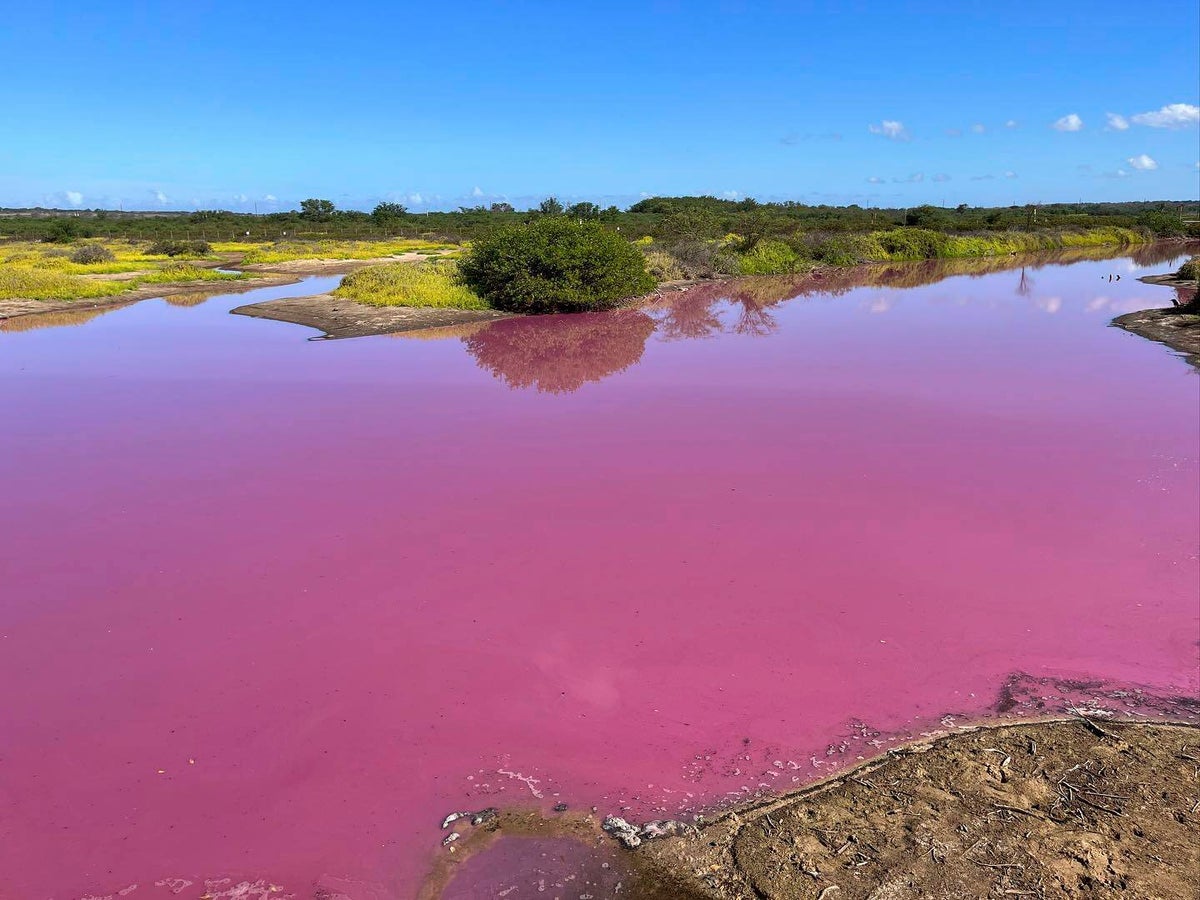
A pond in Hawaii has turned so bubble-gum pink it could be from the set of “Barbie,” but the bizarre phenomenon is no cause for a dance party. Drought may be to blame for the strange hue, scientists say, and they're warning against entering the water or drinking it.
Staff at the Kealia Pond National Wildlife Refuge on Maui have been monitoring the pink water since Oct. 30.
“I just got a report from somebody that was walking on the beach, and they called me up like, ‘There’s something weird going on over here,’” said Bret Wolfe, the refuge manager.
Wolfe was concerned the bright pink could be a sign of an algae bloom, but lab tests found toxic algae was not causing the color. Instead an organism called halobacteria might be the culprit.
Halobacteria are a type of archaea or single-celled organism that thrive in bodies of water with high levels of salt. The salinity inside the Kealia Pond outlet area is currently greater than 70 parts per thousand, which is twice the salinity of seawater. Wolfe said the lab will need to conduct a DNA analysis to definitively identify the organism.
Maui's drought is likely contributing to the situation. Normally Waikapu Stream feeds into Kealia Pond and raises water levels there, but Wolfe said that hasn't happened in a long time.
When it rains, the stream will flow into Kealia's main pond and then into the outlet area that's now pink. This will reduce the salinity and potentially change the water's color.
“That might be what makes it go away,” Wolfe said.
No one at the refuge has seen the pond this color before — not even volunteers who have been around it for 70 years. The pond has been through periods of drought and high salinity before, though, and Wolfe isn't sure why the color has changed now.
Curious visitors have flocked to the park after photos of the pink pond appeared on social media.
“We prefer that they come to hear about our our mission conserving native and endangered waterbirds and our wetland restorations. But no, they’re here to see the pink water," Wolfe joked.
He understands everyone's fascination.
“If that’s what gets them there, it’s OK," he said. "It is neat.”
The wildlife refuge is a wetland that provides nesting, feeding and resting habitat to the endangered Hawaiian stilt, known as aeo, and the Hawaiian coot or alae keokeo. It also hosts migratory birds during the winter.
The water doesn't appear to be harming the birds, Wolfe said.
As a wildlife refuge, people aren't supposed to wade into the pond or let their pets in the water regardless of its color. But officials are taking an extra precaution to warn people not to enter the water or eat any fish caught there because the source of the color has yet to be identified.







